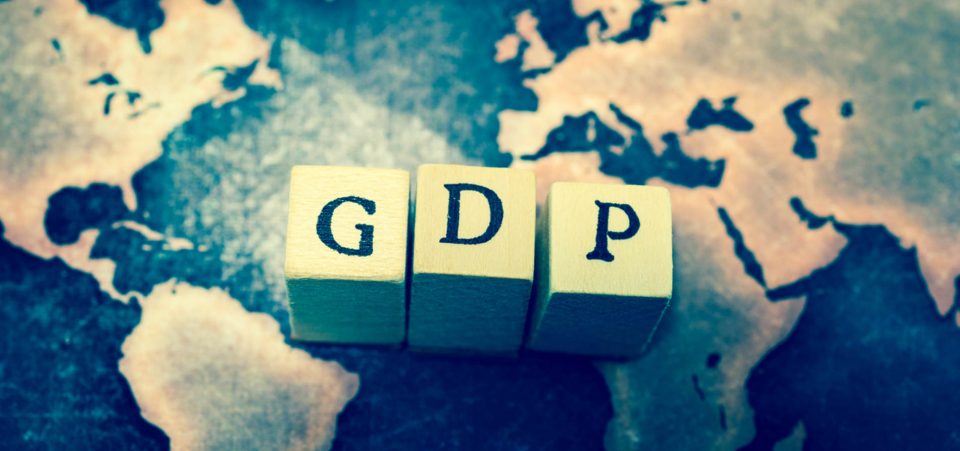Countries with Highest GDP Per Capita Income Share This in Common
The top 10 countries with the highest GDP per capita are great places to live. In fact, these countries with the highest gross domestic product (GDP) are the most sought-after places in the world to live. Having a high GDP per capita ranking is a great indicator of quality of output and production within a resident country. Those with the highest levels are generally the most affluent and provide the best quality of life. Who wouldn’t want that?
Generally, the highest GDP per capita nations have similar defining characteristics: a stable political environment, a competitive business environment, greater social benefits, and modest unemployment levels. Living in the best GDP per capita-ranking countries offers a better overall quality of life, and they tend to be places where migrants and refugees flock to.
In fact, the quality of life is so desirable in the highest GDP per capita nations that many people are risking life and limb to get there. The ongoing migrant “crisis” in Europe is a testament to this, as well as general net migration levels from lower GDP nations to western countries. Politics and other factors also come into play, but the desire for higher living standards is the driving factor.
So what exactly does GDP per capita represent and why do high levels afford a better standard of living?
GDP itself is a prime indicator on the overall economic performance of a country. It represents the total dollar value of all goods and services produced over a given period of time. Higher levels are representative of higher output and productivity, which correlate closely to the overall size of the economy. GDP per capita is simply economic output of a country (as measured by GDP) divided by the number of citizens.
Of course, having a high economic output has its advantages. Bigger economies tend to employ more advanced workers, which yields bigger take-home pay and discretionary income. Government institutions are more developed, which leads to a more robust rule of law. More tax dollars means governments can enact more extensive social safety nets for underprivileged citizens. Credit ratings are better and the ability to finance beneficial public works projects more stout. In short, when government have access to greater amounts of capital (through taxation), good things tend to happen.
So now that we know what GDP per capita is and why it’s important, let’s take a look at the nations with the highest GDP per capita. All numbers provided are courtesy of The World Bank. (Source: “GDP per capita (current US$),” The World Bank, last accessed February 23, 2017.)
Keep in mind that we’re not measuring GDP growth by country or world GDP ranking based on total output. We’re measuring the average GDP level per citizen, which is a commonly quoted quality of life benchmark among the media and think tanks alike. Also, the numbers are represented in U.S. dollar terms instead of Geary-Khamis dollars (also known as International dollars); both are commonly quoted in publications. Finally, the latest figures are 2015 totals, but we’ll include some International Monetary Fund (IMF) projections for your viewing pleasure. (Source: “Report for Selected Countries and Subjects,” International Monetary Fund, last accessed February 23, 2017.)
Countries with Highest GDP Per Capita
GDP per Capita in $USD
| Country | GDP per Capita 2015 ($USD) |
| Denmark | $51,989 |
| Singapore | $52,888 |
| United States | $56,115 |
| Australia | $56,311 |
| Ireland | $61,133 |
| Qatar | $73,653 |
| Norway | $74,400 |
| Macao | $78,585 |
| Switzerland | $80,945 |
| Luxembourg | $101,450 |
(Source: “GDP per capita (current US$),” The World Bank, last accessed February 23, 2017.)
#10 Denmark
This southern Scandinavian country with 5.75 million participants enjoys the tenth highest GDP per capita in the world. Once an agricultural economy, a gradual transformation took place post World War II, transforming the nation into a regional industrial hub.
Unlike other smaller world nations, Denmark doesn’t have one signature industry. They produce an array of finished products, from textiles, electronics, petro-chemical, and shipbuilding, to the more basic dairy products seen at the deli counter. Danish cheese is especially prized for its rich taste and creamy texture, available in unlimited flavors.
Denmark’s 2015 GDP per capita was $51,989. The IMF projects this will rise to $61,639 by 2020.
#9 Singapore
Resting on the southern tip of Malaysia, this small enclave nation of 5.7 million people is quite the economic mighty mouse. Its $52,888 GDP per capita figure dwarfs that of its surrounding nation, Malaysia, by almost double. Known as a main Asian financial hub with modern infrastructure and strict rule-of-law, Singapore’s emphasis on being a global commerce leader has paid dividends.
For example, Singapore ranked #1 (2015) on the world’s Networked Readiness Index (NRI). This index measures the ability for countries to harness the opportunities presented in the Information and Communications (ICT) technology sectors. It is recognized as the standard bearer regarding ICT and impacts the competitiveness and well-being of world nations. It is a big deal for countries looking facilitate innovation and commerce in the already-arrived information age. (Source: “The World’s Most Tech-Ready Countries 2015,” Insead Knowledge, April 15, 2015).
Singapore also ranks highly on social development metrics. It is ranked first in Asia and 11th internationally on the UN Human Development Index (HDI) in 2015. The HDI takes into account four main principles: mean years of schooling, expected years of schooling, life expectancy at birth, and gross national income per capita.
#8 United States
The world’s second-largest economy has the eighth-highest GDP per capita. This is a remarkable feat considering the U.S. population is over 325 million, or 14 times higher than any other participant in the Top 10. The advanced nature of America’s legal framework, property rights, intellectual protections, and post-secondary education fosters a rich business environment where innovation and business formation is unparalleled in the world. It has been so since the industrial revolution.
The United States currently has industry-leading positions in many sectors, including technology, finance, aerospace & defense, and service & leisure. Now that President Trump is in the driver’s seat, expect the business climate to improve as lower taxes and reduced regulations rule the day.
The United States 2015 GDP per capita was $56,115. The IMF projects this will rise to $65,874 by 2020.
#7 Australia
The land down under ranks seventh on the highest GDP per capita ranking. With one of the largest mixed market economies in the world and aggregate GDP resting at $1.2 trillion, Australia is one of the biggest economies in the southern hemisphere. It also has the highest GDP per capita of all the Commonwealth countries.
Australia’s economy is predominantly service-sector based, accounting for 68% of total GDP output. However, significant economic contributions are made in the mining and agricultural sectors.
Australia’s 2015 GDP per capita was $56,311. The IMF projects this will rise to $60,505 by 2020.
#6 Ireland
The “Emerald Isle” has obtained its ranking largely on account of being a modern knowledge economy. Using a formula of extremely low corporate tax rates—as low as 6.25% for earnings linked to research and development—to attract big business, Ireland has diversified its service-based economy quite well. Taking advantage of Ireland’s tax-haven status, several notable high-tech and multinational companies have set up headquarters, including Accenture Plc (NYSE:ACN), eBay Inc (NASDAQ:EBAY), Twitter Inc (NYSE:TWTR), Uber Technologies Inc, and more.
Ireland’s 2015 GDP per capita was $61,133. The IMF projects this will rise to $78,537 by 2020.
#5 Qatar
This tiny oil-rich nation in the northeastern Arabian Peninsula is the only Middle Eastern country on this list. Qatar’s economy is a one-trick pony, but what a pony it is. Qatar owns the third-largest oil and natural gas reserves in the entire world.
Thus, with an economy so dependent on natural resources, expect lots of fluctuation in Qatar’s highest GDP per capita ranking.
Qatar’s 2015 GDP per capita was $73,653. The IMF projects this will rise to $77,709 by 2020.
#4 Norway
Norway is a mixed market economy with an abundance of coveted natural resources, particularly oil. In fact, it’s estimated the Norwegian section of the North Sea contains 54% of the sea’s total oil reserves and 45% of its total gas reserves. Norway also has a developed heavy industry sector, with shipbuilding being a primary affinity.
While the Norwegians are quite fortunate overall, their reliance on natural resources and heavy industry does have a price. Their economy tends to be more cyclical than other economies (service-based, for example), especially in periods of low oil prices and cargo ship overcapacity. Thus, expect Norway to move up and down this list in subsequent years, riding the waves of demand defined by the global economy.
Norway’s 2015 GDP per capita was $74,400. The IMF projects this will rise to $78,185 by 2020.
#3 Macao
Part of mainland China but classified as an autonomous territory, Macao has the third-highest GDP per capita ranking in the world. The former Portuguese colony’s economic calling card is gambling tourism, plain and simple. In fact, the service sector accounts for over 90% of all economic activity.
Macao particularly caters to the millions of Chinese people who have become wealthy during the country’s “Great Leap Forward.” It’s Asia’s version of Las Vegas, except it rests on the Pearl River Delta and not the desert.
Macao’s 2015 GDP per capita was $78,585.
#2 Switzerland
Despite its relatively small population of 8.4-million people, Switzerland’s economy has thrived due to its highly skilled workforce. The country is famous for its finely tuned watches (Rolex is headquartered here) and precision tools (everyone knows the crafty Swiss Army knife). Switzerland is also known for its luxury food exports, notably, fine chocolate. The “Toblerone” is one of the world’s best-known chocolate bars.
In fact, owing to its extensive financial stability, balanced budgets, and low debt ratios, the Swiss franc is among the world’s foremost safe-haven currencies. As well, Switzerland has one of the world’s highest gold per capita totals, further solidifying the franc’s safe-haven status.
Switzerland’s 2015 GDP per capita was $80,945. The IMF projects this will rise to $85,463 by 2020.
#1 Luxembourg
Nestled between southern Belgium and western Germany, the tiny country of Luxembourg is the world’s preeminent economic powerhouse per capita. Luxembourg’s economic calling card is its financial industry, and it provides wealthy, non-resident individuals high confidentiality and asset protection similar to the Swiss. Low general tax rates and large tax incentives draw in multinational companies looking to set up European headquarters and distribution hubs.
To a smaller extent, the steel industry contributes to the nation’s economic development. It is Luxembourg’s primary export, accounting for 13% of all exports or $1.2 billion in 2015. (Source: “Luxembourg’s Top 10 Exports,” WorldsTopExports.com, January 23, 2017.)
Luxembourg’s 2015 GDP per capita was $101,450. The IMF projects this will rise to $120,900 by 2020.






